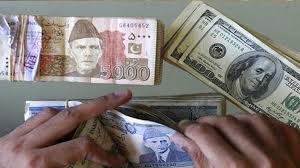Pakistan Aims to Raise $4 Billion from Middle Eastern Banks, Says SBP Governor
KARACHI — Pakistan is targeting to raise up to $4 billion from Middle Eastern commercial banks by the next fiscal year to address its external financing needs, according to Jameel Ahmad, Governor of the State Bank of Pakistan (SBP). This move is part of broader efforts to secure additional funding and manage the country’s financial challenges.
In an interview with Reuters, Ahmad expressed optimism about Pakistan’s financial outlook, citing ongoing negotiations to roll over $12 billion in loans from China, Saudi Arabia, and the United Arab Emirates (UAE). He also indicated that the country is in the advanced stages of securing $2 billion in additional external financing, which is crucial for the IMF’s approval of a $7 billion bailout programme.
The governor noted that Pakistan has requested an extra $1.2 billion loan from Saudi Arabia to bridge a $2 billion financing gap, further underscoring the nation’s effort to shore up its financial position. However, as of August 26, the IMF’s schedule shows that Pakistan will not be on the agenda for the Executive Board meeting until September 4, 2024.
Addressing recent monetary policy changes, Ahmad highlighted that recent interest rate cuts have been effective in controlling inflation and stabilizing the current account. Pakistan’s annual consumer price index inflation had dropped to 11.1% in July from over 30% in 2023, reflecting the impact of the central bank’s measures.
The SBP reduced the benchmark interest rate twice, from a historic high of 22% to 19.5%, and will review the monetary policy again on September 12. Ahmad emphasized that while managing inflation and financial stability remains the central bank’s priority, there is now a growing focus on fostering economic growth and addressing related socioeconomic issues.
“The Monetary Policy Committee will review all developments,” Ahmad stated. “Future rate decisions cannot be pre-determined, but our focus now includes promoting growth, job creation, and addressing other economic challenges.”
The central bank’s approach aims to balance immediate financial stability with long-term economic development, acknowledging the importance of both price stability and growth for overall socioeconomic progress.
